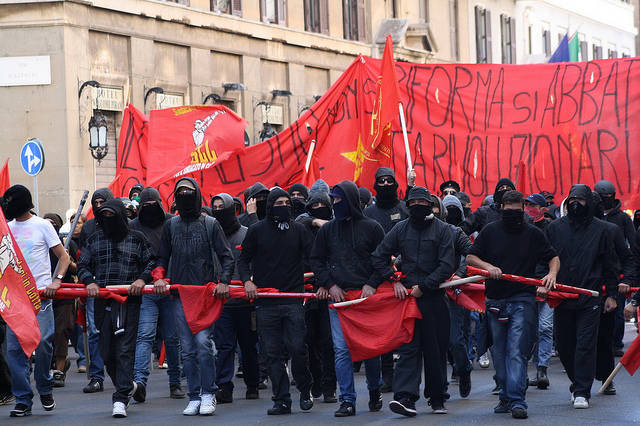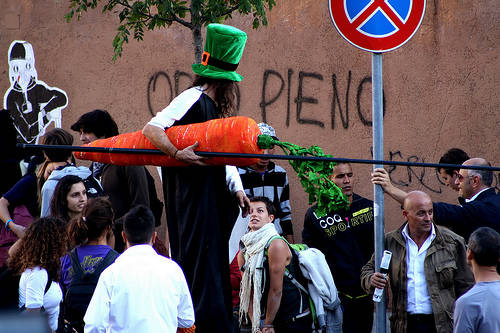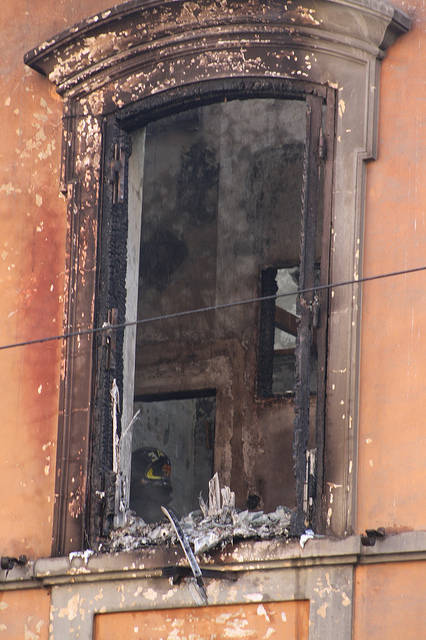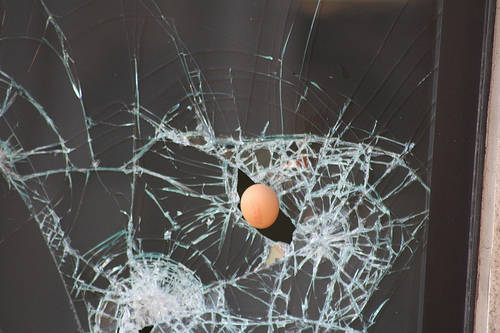Rome, from Peaceful March to Mayhem—but “nobody got killed”
ROME – “What I want to know,” an angry eye-witness told me after the event, “is why the Roman police chief, the Questore, did not resign.” The answer came from the chief’s boss, Interior Minister Roberto Maroni, even as police trucks and ordinary people’s cars were still burning last Saturday evening: “Non c’è stato il morto” (nobody got killed), he said with obvious pride, as if that sufficed. “The risk was real,” he went on to say, “because the violent faction—criminals who must be given an exemplary punishment—used the [peaceful] marchers as a shield.”
Speaking from Washington, where he was on an official visit, Defense Minister Ignazio La Russa agreed. “I think they were trying to have somebody die. Thanks to the police work, this didn’t happen.”
What is to be done? Maroni said Monday that he will ask Parliament to put back on the books a tough law that allows police the use of weapons during demonstrations and the preventive jailing of presumed trouble makers for 96 hours. Adopted in 1973, a year of noteworthy political violence, following a referendum the law was abrogated in 1978.
Some onlookers saw moral damage in Saturday’s mayhem. “Piazza San Giovanni has been defiled,” a trade unionist complained. Traditionally that piazza has been the scene of massive, and non-violent, leftist and labor demonstrations. On the more pragmatic level, the cost of a burnt office, broken store windows, trashed vehicles, and torn-up streets is conservatively estimated at over $2 million. And then there were 135 injured. By contrast, and perhaps because the violent faction successfully used the peaceful marchers as shields, a scant twelve arrests were made, and these included four women and six minors.
On Monday before dawn police in search of weapons raided the headquarters and hideaways of known “anarchist-insurrectionist” movements all over Italy. Helping the police are the Indignados themselves (the catch-all term is borrowed from Spain). Under Operation Let’s Unmask the Violent People,” a blogger called Il Fazioso invited the peaceful Indignados to put onto his blog all the photos taken with cell phones and cameras of the Black Blockers who were hurling Molotov cocktails and basalt paving stones at the police. (See: http://www.ilfazioso.com/) By way of thanks, the anonymous blogger informs us, complaints are pouring in from (presumably) the far left, alleging that the blogger is now an “indecent servant” of the Carabinieri and of Berlusconi.
Most of those wallowing in the violence had faces covered, but reporter Francesco Cirillo, eye-witness to the demonstration as it slipped from peaceful march into mayhem, told me in a telephone interview that two things struck him in particular. The first was the skillful organization exhibited by the most violent. “It had all been meticulously prepared,” said Cirillo. The second was that a certain number wore signature scarves identifying them as “tifosi”—that is, members of a controversial fan club of the Rome soccer team, La Roma. These two groups spurred on others, including young teenagers akin to their looting counterparts in the London riots last month.
Cirillo's account of skillful preparations beforehand is backed up by an unusual interview in Monday’s La Repubblica, in which one of the violent rioters boasted that he and his 800 comrades (others put the figure at around 100, however) had learned their stuff from their buddies in Greece. “We were well prepared. We divided into small groups, each with a specialty—tearing up paving stones, throwing Molotov cocktails, hitting with bats.” In one chilling detail he related that the previous day they had parked a car loaded with weaponry by Piazza San Giovanni. As the march began they were already organized into phalanxes, as if by Napoleon, with a feint on one street and then action on the next, he explained. All were told to keep their gas masks and facial hoods and weapons well concealed in backpacks until the order for action came.
Among those contested by the peaceful marchers was Mario Draghi, who takes up his post as head of the European central Bank (BCE) Nov. 1. Draghi knew that he was a target of the indignados in Rome, but on the eve of the demonstration expressed comprehension for their protest. “If we’re angry over the crisis, just imagine how the young people, the 20- and 30-year olds, without prospects….. Without them, there is no growth. Only by lifting the rigidity that blocks the development of the potential of the coming generations can the Italian economy be brought back onto the path toward growth.” Informed of how the demonstration had degenerated, Draghi said only, “What a shame.” Hear, hear.





































i-Italy
Facebook
Google+
This work may not be reproduced, in whole or in part, without prior written permission.
Questo lavoro non può essere riprodotto, in tutto o in parte, senza permesso scritto.